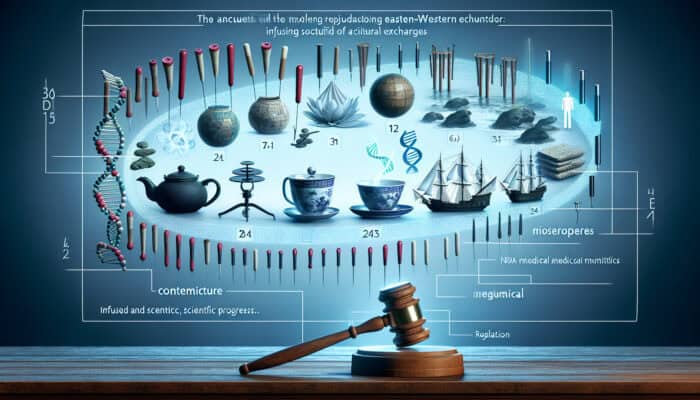Empowering Your Finances: Distinguishing Between Good Debt and Bad Debt
Good debt is defined as financial commitments made with the intention of acquiring appreciating assets or generating income over time. Typical examples include mortgages and student loans, both of which play a vital role in achieving homeownership and improving career opportunities. On the other hand, bad debt refers to liabilities that harm your financial well-being, such as credit card debt and consumer loans that often come with high-interest rates and do not yield a worthwhile return on investment. Grasping the distinctions between these two categories of debt is crucial for making informed financial decisions that pave the way for lasting success.
Analyzing the Factors Behind Increasing Household Debt in the UK
Across the UK, many individuals and families face concerning levels of debt, driven by a multitude of economic factors and evolving spending habits. A significant number of households find themselves living beyond their means, frequently resorting to credit cards and loans to manage essential expenses, including mortgage payments and daily living costs. It is imperative to differentiate necessary borrowing from impulsive spending to ensure effective financial management. By identifying and eliminating superfluous expenses, individuals can proactively work towards achieving greater financial stability and reducing the risk of accumulating excessive debt.
In-Depth Examination of Bad Debt and Its Detrimental Effects
Bad debt typically involves obligations incurred to purchase items that rapidly lose value or do not provide long-term benefits. This includes high-interest loans, especially credit cards, which can trap borrowers in a continuous debt cycle due to escalating interest rates. Such debt represents a significant threat to financial wellness, especially when it exceeds one’s ability to repay.
The challenges associated with bad debt include any financial obligation that exacerbates your financial difficulties, making repayment increasingly challenging. High-interest credit card balances, expensive overdrafts, or loans taken out to cover unexpected costs can spiral out of control if not managed carefully. It is essential to assess your ability to service any loan or credit before committing, as all debt can transition from manageable to overwhelming if not approached with caution.
A viable strategy to alleviate the burden of bad debt is considering a debt consolidation loan. This financial approach allows individuals to combine various debts into a single, manageable loan with one monthly payment, often resulting in lower overall interest rates. The professionals at Debt Consolidation Loans are available to assist you through this process, empowering you to regain control over your financial situation and diminish stress.
Understanding the Financial Implications of a £5000 Debt
Holding a debt of £5000 can have negative ramifications; however, its overall impact heavily relies on the type of debt and your specific financial circumstances. Recognizing that certain debts, such as mortgages and student loans, are often classified as good debt is crucial. If your £5000 debt arises from consumer spending or credit card usage and you can comfortably manage the monthly payments, it may not pose a significant risk. Conversely, if repayment becomes challenging or you are juggling multiple loans, it may be prudent to explore alternatives such as a debt consolidation loan, which consolidates your financial obligations into one manageable payment at a fixed interest rate.
Assess Your Credit Status: Are You Listed as Bad Debt?
To ascertain if you are categorized as having bad debt, it is advisable to reach out to the UK’s credit reference agencies (CRAs). These organizations compile and maintain extensive records regarding your credit management and payment history. The three main CRAs to consider are:
Each CRA generates a credit report or credit file that outlines your creditworthiness, which may vary across agencies. Therefore, it is advisable to review all three reports to obtain a comprehensive understanding of your credit status.
Evaluating the Burden of Student Loan Debt
While a student loan may initially seem like a financial burden, it is generally considered good debt. This government-backed loan is designed to support your education and boost your long-term earning potential. Repayment usually commences after graduation and is structured according to your income, making it a more manageable financial responsibility. In some cases, your loan may even be forgiven after 25 to 30 years, contingent upon the loan type and your repayment history. This positions student loans as a strategic investment capable of yielding significant future benefits.
Are Car Loans a Form of Bad Debt?
When determining whether a car loan equates to bad debt, it is vital to assess the necessity and affordability of the vehicle. A reasonable car loan that finances a reliable vehicle can be viewed as good debt, as it facilitates your ability to commute to work and generate income. However, financing a luxury vehicle or one that stretches your budget can quickly turn a car loan into bad debt.
Understanding the Long-Term Effects of Debt on Financial Health
While mortgages are categorized as long-term debt and generally perceived as good debt, managing bad debts like credit card balances can quickly become overwhelming. The stress of keeping up with repayments can negatively impact your overall well-being. To alleviate this pressure, consolidating your debts into a single loan with one monthly payment and interest rate can provide substantial relief, ultimately improving your financial outlook.
Calculating Your Bad Debt Percentage for Better Financial Awareness
To compute your bad debt percentage, divide the total amount of your monthly or annual bad debt by your total monthly or annual income. Multiply the resulting figure by 100 to determine your bad debt percentage, which serves as a critical metric for evaluating your financial health and informing your financial decisions.
Identifying Opportunities to Write Off Bad Debt
Writing off bad debt is possible, but this largely depends on your unique circumstances and the policies of your creditor. A creditor may choose to halt collection efforts under specific exceptional situations. If you believe you have valid grounds for debt relief, engaging in a dialogue with your creditor is essential. Alternatively, exploring options like a debt consolidation loan for bad credit can empower you to regain control over your financial obligations without needing to formally request a debt write-off.
Understanding How Long Negative Debt Affects Your Credit Report
Typically, negative debt information stays on your credit report for approximately seven years. This includes records of late or missed payments, accounts sent for collection, and bankruptcies, all of which can significantly impact your creditworthiness and future borrowing capabilities.
Strategies for Removing Negative Debt from Your Credit Report
If you find inaccuracies in negative information on your credit report, you can reach out to the relevant Credit Reference Agency to request corrections. However, if the information is accurate, the removal process can be more challenging. If you believe your situation is unfair, contact your lender, as they may consider removing minor negative entries, such as a single missed payment, although they are not required to do so.
Proven Strategies for Effective Bad Debt Management
To efficiently manage your debt, it is essential to have a comprehensive understanding of your total obligations, lenders, and their respective interest rates. Prioritizing debts based on urgency and interest rates can also prove beneficial. Utilizing a debt consolidation loan can streamline this process by merging multiple debts into a single manageable monthly payment to one lender, thereby reducing financial complexity and alleviating stress.
Proactive Approaches to Overcoming Bad Debt Challenges
The most effective method for tackling bad debt is through proactive measures. Numerous strategies are available to assist you in managing your debt, each leading to different outcomes. For individuals experiencing significant financial distress, a Debt Relief Order (DRO) can offer relief by pausing your debts for a year, with the possibility of cancellation if your financial situation remains unchanged. An Individual Voluntary Arrangement (IVA) allows for structured repayments over a defined period, with any remaining balance discharged afterward, but this requires adherence to a legally binding agreement. Conversely, bankruptcy can eliminate all debts at once, but it severely impacts your credit report and future borrowing potential.
A practical and less detrimental alternative that will not negatively affect your credit report is a debt consolidation loan. This strategy combines all your debts into a single loan, resulting in one monthly payment, one lender, and one interest rate, which significantly simplifies debt management and provides a clearer financial trajectory.
Clarifying Debt Types: Good Debt Versus Bad Debt
Not all debt is equal; it can be classified as either good or bad. Good debt includes financial obligations related to investments that promote wealth accumulation or increased income, such as mortgages or student loans. In contrast, bad debt typically arises from credit card purchases or consumer loans that do not contribute positively to your financial well-being over the long term.
In-Depth Overview of the Benefits of Good Debt
Good debt is characterized by financial obligations taken on for the purpose of investments that foster wealth creation or enhance income potential. This includes mortgages and student loans, which can significantly improve your financial outlook over time. Essentially, good debt encompasses any borrowing that ultimately contributes to increased financial security and stability.
Good debt should not jeopardize your financial health. When securing loans, it is crucial to have a clear purpose and a solid repayment plan that involves consistent, manageable payments. A prime example of good debt is a mortgage, which facilitates homeownership and builds equity over time. Similarly, using a loan to consolidate multiple debts into a single payment is also considered good debt, as it simplifies your financial obligations.
Other noteworthy examples of good debt include student loans, representing an investment in your education that aims to enhance career opportunities, or a car loan that enables access to job opportunities that may otherwise be unattainable.
Exploring the Advantages of Good Debt
Good debt serves as a financial tool that encourages long-term economic stability. This type of debt includes loans taken for significant investments, such as a mortgage for a home or a student loan for education. These debts are beneficial as they align with your financial growth and can enhance your overall earning potential over time. However, it is vital to ensure that these debts remain manageable and do not exceed your repayment abilities.
The Consequences of a Debt-Free Status on Your Financial Health
While being entirely debt-free may seem advantageous, it can also lead to a lack of credit history, which is essential for establishing a strong credit score. Individuals without any debt may find their credit scores suffer just as severely as those grappling with substantial debt challenges. Engaging in responsible borrowing and repayment practices is crucial for maintaining a healthy credit profile and ensuring future financial prospects.
Assessing Mortgages: The Right Financial Choice?
Mortgages are widely viewed as good debt because they signify a financial commitment to an appreciating asset—your home. A mortgage represents a long-term investment that can greatly enhance your financial portfolio, especially if property values increase over time. As you pay down your mortgage, you build equity, further solidifying your financial position and providing security for your future.
Evaluating the Merits of Student Loans: Are They Justified?
Student loans are categorized as good debt because they represent government-backed financial support aimed at advancing your education. This investment in your future can yield superior career prospects and increased earnings over time, distinguishing it from consumer debt that does not offer similar advantages.
Understanding the Debt-to-Income Ratio: A Crucial Financial Metric
The debt-to-income ratio (DTI) is a vital financial metric that compares your total debt obligations to your overall income. Lenders use this ratio to evaluate your ability to repay when considering loan applications. Generally, a DTI of less than 36% is deemed acceptable, with no more than 28% allocated to mortgage repayments, indicating a healthy balance between income and debt commitments.
Understanding the Risks Associated with Long-Term Debt
The concerns surrounding the implications of long-term debt on financial stability are prevalent. In the UK, numerous individuals carry some form of debt, whether through mortgages, business loans, or educational expenses. Although borrowing can facilitate significant purchases, the key lies in effective debt management. Problems arise when debt accumulates beyond manageable levels, particularly if not consolidated properly, leading to potential financial strain and personal distress.
Additionally, excessive debt can manifest in various ways, affecting not only financial stability but also overall well-being.
1. The Physical and Mental Health Repercussions of Debt
Research demonstrates a strong association between debt and adverse health outcomes. Financial stress correlates with various health issues, including ulcers, migraines, and even heart-related conditions. Furthermore, mental health can suffer significantly, with anxiety and depression becoming prevalent among individuals facing overwhelming debt, especially when compounded by hidden fees or insufficient debt management strategies.
2. The Influence of Debt on Your Credit Score
It is widely recognized that debt considerably affects your credit score, a crucial factor when applying for loans or mortgages. Approximately 30% of your credit score derives from your debt history, making it essential to manage debts responsibly to maintain a favorable credit rating and secure future financial opportunities.
3. The Risk of Poor Spending Habits Triggered by Debt
The convenience of credit-based purchasing can foster detrimental spending habits. When items can be financed or paid off over time, it becomes increasingly challenging to track actual expenses, making purchases seem more affordable than they genuinely are. This behavior can lead to rapid debt accumulation if not closely monitored.
Recognizing the potential challenges associated with debt is crucial, but equally important is developing effective management strategies. Many individuals discover that debt consolidation loans can streamline their repayment processes, making it easier to manage multiple debts. Reach out today to learn how you can regain control over your financial situation.
Evaluating Debt Consolidation Loans: Is This the Right Solution for You?
Debt consolidation loans offer an effective strategy for individuals striving to regain financial stability and manage their debt more efficiently.
The Article Understanding Good Debt and Bad Debt: A Clear Guide Was Found On https://limitsofstrategy.com



